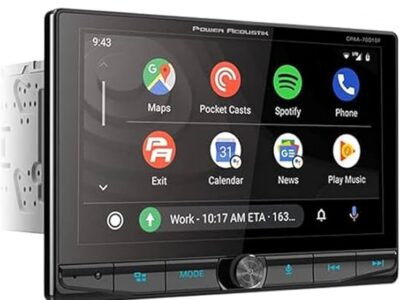
Renault Captur Windshield Washer Not Working: Causes, Fixes, and Complete Troubleshooting Guide

Understanding the Renault Captur Washer System
The windshield washer system in the Renault Captur seems simple on the surface, yet when it fails, the problem often hides in places drivers don’t expect. We rely on this system daily to keep visibility clear, but clogged nozzles, blown fuses, frozen fluid, or electrical faults can quietly disable it. Below, we explore every likely cause and walk through practical fixes using a structured, diagnostic-first approach.
Major Causes of Washer Failure in a Renault Captur
Clogged Washer Nozzles
Clogged nozzles remain the most common culprit behind Captur washer failure. Given their exposed position near the trailing edge of the bonnet, they collect pollen, dust, road debris, insect residue, and limescale over time. Modern fan-style micro-emitters deliver a fine mist for wider coverage, but their precision makes them much more prone to blockage.
Diagnostic Checks
To confirm whether the nozzles are clogged:
- Turn on the washer system and listen for the pump.
- If the pump whirs normally, disconnect the hose from the nozzle and activate the wash function.
- Strong flow from the hose but no spray from the nozzle confirms a blocked nozzle.
Blown Fuse Affecting the Washer Pump
The washer pump depends on a dedicated fuse. If the fuse blows, the electrical circuit is cut and the pump becomes lifeless.
How to Diagnose a Blown Fuse
- Locate the fuse box and identify the washer pump fuse using the Captur’s fuse diagram.
- Remove the fuse and inspect the internal metal strip against the light.
- A broken strip indicates a failure.
- Replace the fuse with the same amperage rating.
A failed fuse often reveals an underlying electrical overload, so if it blows again shortly after replacement, there may be a deeper issue that requires wiring inspection.
Washer Pump Failure
If the pump itself fails, the washer system becomes silent and inactive. These pumps can suffer internal motor failure, corrosion, mechanical wear, or electrical burnout.
Quick Pump Test
- Roll down the window.
- Activate the washer switch while listening near the front bumper.
- No audible hum points to a failed pump or a power supply problem.
Power Verification
Using a multimeter:
- Disconnect the pump’s electrical connector.
- Activate the washer system.
- A healthy circuit will show approximately 12 volts.
- If voltage is present but the pump doesn’t run, the pump has failed.
- Zero or low voltage indicates wiring, switch, or grounding issues.
Leaking Washer Hoses
Washer hoses running between the reservoir, pump, and spray nozzles can crack, loosen, split, or detach due to engine heat, aging, or vibrations. Even a pinhole leak can stop fluid from reaching the nozzles.
How to Detect Leaks
- Park the vehicle on a dry surface.
- Hold the wash function for five seconds.
- Check for drips or pooling under the front bumper.
- Examine accessible hoses for cracks, brittleness, or loose joints.
Rodent damage is also common, particularly near the bulkhead. Bite marks or shredded insulation are clear indicators that require inspection of additional wiring.
You may be interested in reading Renault Captur Injection System Fault — Complete Troubleshooting Guide
Renault Captur Injection System Fault — Complete Troubleshooting GuideBlocked Washer Hoses
While less frequent than nozzle blockages, the hoses themselves can clog with sediment or debris, especially if hard water or contaminated fluid has been used.
Hose Blockage Test
- Disconnect the hose from the nozzle.
- Activate the system.
- Weak or no flow from the hose—with a working pump—indicates a blockage inside the hose.
Manually clearing debris or replacing the hose restores full pressure.
Frozen Washer Fluid in Cold Weather
In colder climates, the washer reservoir, pump, and hoses can freeze when filled with summer-spec fluid. Frozen fluid prevents flow and can potentially crack the reservoir.
Indications of Frozen Fluid
- No fluid spray during cold weather.
- Pump may hum, strain, or run silently with resistance.
- Washer reservoir feels rigid or shows bulging.
Thawing the fluid in a warm garage or after an extended drive usually restores function. However, a cracked reservoir requires replacement.
Faulty Washer Switch
Although rare, a malfunctioning steering-column washer switch can interrupt the signal to the pump. This is usually the case when no pump noise is present and full electrical continuity is missing.
Testing the Switch
- Remove the switch assembly from the steering column.
- Use a multimeter to verify continuity when the washer function is engaged.
- Intermittent or absent continuity confirms switch failure.
Empty Washer Reservoir
It may seem obvious, but an empty reservoir is one of the simplest causes behind a non-functioning system. Additionally, if the reservoir empties shortly after filling, a leak may be present at the base or along the hose connection.
Advanced Troubleshooting for Persistent Washer Issues
Inspecting the Washer Reservoir
A cracked reservoir prevents fluid from staying inside the system. Examine the base and sidewalls for splits caused by freezing or impact damage.
Checking Ground Points and Wiring
Corroded grounding points or frayed wires can limit current flow to the pump. Ensure:
- Ground bolts are clean and tight
- Wiring harnesses near the pump are intact
- No moisture or corrosion is visible in connectors
Testing for Air Locks
After hose replacement, air can trap in the line and prevent fluid flow. Running the washer for several seconds or manually priming the system often solves the issue.
You may be interested in reading Renault Captur Injection System Fault — Complete Troubleshooting Guide
Renault Captur Injection System Fault — Complete Troubleshooting Guide Renault Captur Juddering When Pulling Away: The Complete, Human-Written Guide You Truly Need
Renault Captur Juddering When Pulling Away: The Complete, Human-Written Guide You Truly NeedPreventing Washer System Problems
Use Proper Washer Fluid
Using high-quality washer fluid helps prevent limescale buildup, freezing, and nozzle clogging. Avoid plain tap water.
Clean Nozzles Regularly
A routine wipe-down during car washes prevents debris accumulation.
Inspect Hoses During Oil Changes
Heat cycles cause hoses to become brittle. A quick inspection every service interval prevents surprise failures.
When to Consult a Professional Mechanic
While most washer system issues are simple to fix, electrical faults, frozen reservoirs, or pump replacements may require professional tools and expertise. A qualified technician can perform load testing, wiring trace, or component replacement with OEM-level accuracy.
Conclusion
A non-functioning windshield washer in a Renault Captur usually stems from a handful of common issues—clogged nozzles, hose leaks, blown fuses, frozen fluid, or pump failure. By diagnosing problems in a systematic order and checking the most accessible components first, we can restore full washer functionality quickly and prevent similar issues from reoccurring. Maintaining clean nozzles, using proper washer fluid, and inspecting hoses regularly keeps the system reliable throughout the year.
Frequently Asked Questions
Why does my Renault Captur washer pump make noise but no water comes out?
If the pump runs but no spray appears, the nozzles are likely clogged or the hose is blocked or leaking.
Can frozen washer fluid damage the reservoir?
Yes. Frozen fluid expands and may crack the reservoir or distort the pump housing.
What fuse controls the washer pump in the Renault Captur?
The washer pump has its own dedicated fuse. Consult the fuse box diagram for the specific location.
How do I unclog the washer nozzles on a Captur?
Disconnect the hose, verify fluid flow, then clean or replace the nozzle if blocked.
You may be interested in reading Renault Captur Injection System Fault — Complete Troubleshooting Guide
Renault Captur Injection System Fault — Complete Troubleshooting Guide Renault Captur Juddering When Pulling Away: The Complete, Human-Written Guide You Truly Need
Renault Captur Juddering When Pulling Away: The Complete, Human-Written Guide You Truly Need Kia Picanto Issues: The Complete, Expert-Led Guide to Common Problems, Symptoms & Fixes
Kia Picanto Issues: The Complete, Expert-Led Guide to Common Problems, Symptoms & FixesWhy do my washer hoses keep disconnecting?
Loose hoses often indicate worn rubber, engine vibration, or previous improper refitting.
If you want to know other articles similar to Renault Captur Windshield Washer Not Working: Causes, Fixes, and Complete Troubleshooting Guide you can visit the category Common Problems.
Deja una respuesta






More content of your interest